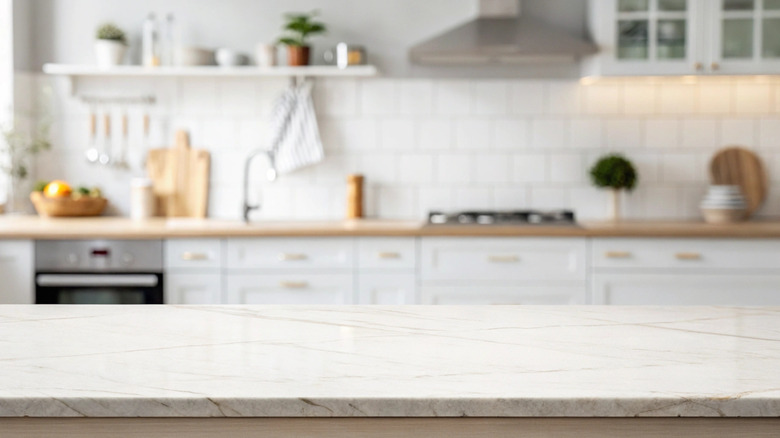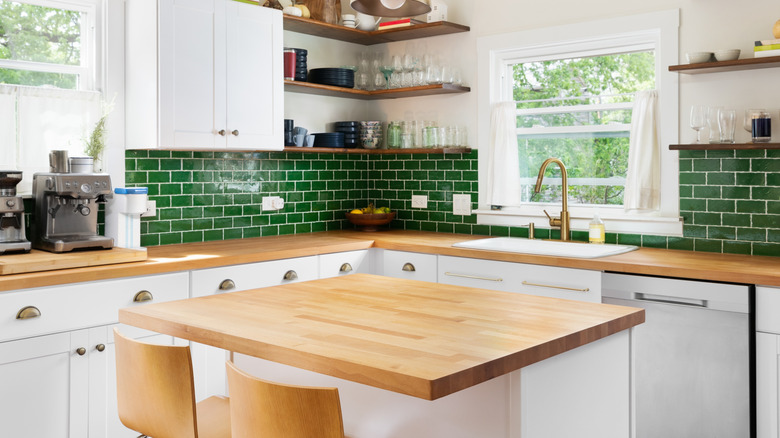The Countertop Material That's Losing Its Place In Modern Kitchens, According To Designers
It's tough to have a gorgeous kitchen without some fantastic countertops. They're often one of the first things the eyes land on when they take in the entire kitchen, making them a design focal point that can tie together the other elements of the room. When they're too cluttered, shabby, or outdated, the space can lose its modern luster.
For a long time, people turned to one material to bring timeless elegance to a kitchen — white marble. It's a pristine stone that can help make a kitchen look bright and airy, making it especially popular among people aiming to create the perfect Nordic-style kitchen. Recently, though, some designers have shared that the material may be elegant, but it's a choice that's becoming outdated.
One concern designers voiced is that the market has become oversaturated with the material. Additionally, white marble is relatively high maintenance, making it difficult for on-the-go families to keep the countertops looking as clean and breezy as they'd like them to be. Thankfully, there are alternative materials that can better handle all of a kitchen's messes while still looking great.
Downsides to white marble countertops
One of the downsides to white marble is its ubiquity. As light, Scandinavian-style kitchens grew in popularity, people gravitated towards the material. But now that it's everywhere, it can make a kitchen seem safe and standard instead of letting it ooze with personality. That clashes with some of the latest countertop trends that are huge in 2025. Recently, many homeowners are making bolder design decisions for their kitchens, hoping to imbue their spaces with more character and warmth.
Durability is another concern when it comes to white marble. It's relatively soft, especially compared to a material like granite, making it susceptible to scratches and scuffs. The material is also quite porous, meaning all of life's little spills can get caught inside the tiny holes, leading to stains. Sealing your marble countertops can help prevent some of this, but many people don't keep up with the recommended schedule of sealing as often as every six months. It's not impossible to keep white marble looking fresh — but if your countertops get tons of use and you're not feeling up to the maintenance challenge, you might find a more durable material is the better option for you.
Alternatives to white marble countertops
There are plenty of options for marble alternatives. One of the most popular is quartz. It's non-porous and water-resistant, so it's far easier to maintain and more durable than marble and granite. Despite that durability, many people still often preferred other materials because quartz didn't always come in rich, veined patterns. Recently, though, manufacturers are creating a much wider variety of quartz countertop patterns, including many that mimic the textured look of natural stone. You can find them in richer colors than white, bringing more depth and personality to countertops while still keeping the elevated aesthetic of stone.
If you're ready to step away from the natural stone look entirely, butcher block countertops are another option. Their wooden appearance can instantly transform a kitchen, giving the space a sophisticated warmth. Butcher block countertops aren't quite as impervious to wear and tear as quartz or granite are — they don't hold up well against heat, and can get scratched — but the upkeep might be worth it to you if you want a surface more inviting and unique than white marble.


